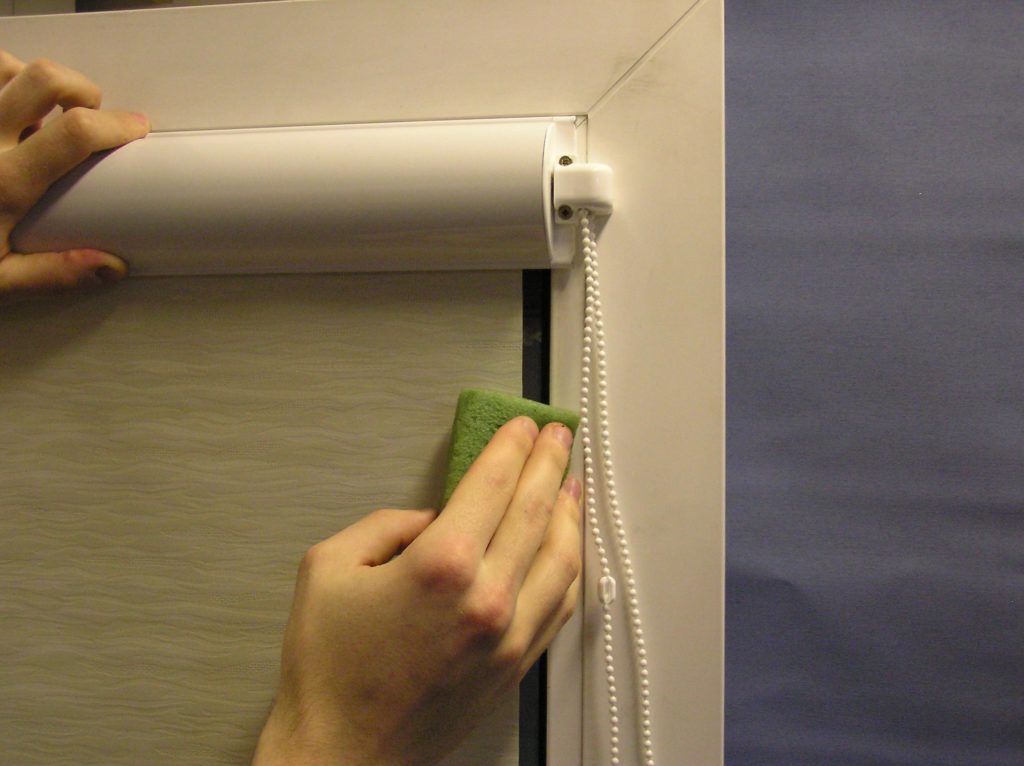You can reuse used sponges. Here’s how.

Kitchen sponges are dirtier than you think. The warm water and swirling food remnants in your kitchen sink make it an ideal breeding ground for bacteria, and porous sponges make a cozy home for microbial life.
A 2017 study found that sponges are the dirtiest place in your house — even dirtier than the toilet bowl — with an average of over 54 billion bacterial cells. Even if you sanitize your sponge after every use (which, experts say, you should do: rinse the sponge in one part bleach to nine parts water, or microwave the sponge in a bowl covered with water on high for about thirty seconds), researchers say you should swap sponges every week in order to keep your eating surfaces clean and sanitary.
The constant rotation of sponges does a damage on the waste stream, though. Typical grocery-store kitchen sponges are made from polyurethane, a petroleum-based material that cannot be recycled or composted.
They may be grimey, but those used sponges can find new life around your house before they go into the trash (though you should thoroughly sanitize them before repurposing them). Here are our favorite ways to reuse sponges after they have outlived their usefulness — and cleanliness — in the kitchen sink.
Compost
“Wait, didn’t you just say we can’t compost sponges?” Well, dear readers, while that is true of conventional sponges. However, if you purchase a cellulose-based sponge, which are made from a combination of ingredients like wood pulp and cotton fiber, the sponge can be composted at the end of its life. Look out for packages that tout biodegradable, natural materials. Cut cellulose sponges into smaller pieces to speed up their disintegration in the compost heap.
Save them for dirty jobs
Even if your sponge is no longer suited to clean plates and pots, you can still use it to clean other areas around your house, like the bathroom, trash cans, tires and the exterior of your car. Cut a corner off your sponge to remind yourself that it is for dirty jobs only so you do not accidentally scrub a plate with toilet water.
Remove lint and pet fur from furniture
Anyone with a furry friend knows that pet hair stubbornly clings to fabric surface. Give upholstery a quick wipe down with a dampened old sponge to easily remove lint and pet fur. You can either throw the sponge out after a thorough cleaning or roll the lint off with your fingers to use the sponge again.
Hydrate thirsty plants
Some houseplants never seem to get enough water. If you have thirsty plants that seem to be suffering from a lack of hydration no matter how much you water them, put a few old sponges in the bottom of the pot or vase to retain water and keep the plants from drying out.
Soak up water in your umbrella stand
If you have a few days (or weeks) of rainy weather, you may notice water pooling in your umbrella stand after you leave it there to dry at the end of the day. Line the bottom with sponges to soak up the standing water.
Start seeds
If you are starting your seeds indoors and you are out of egg cartons, a sponge is another creative upcycled material where you can start small, fast-growing seeds like lettuce, carrots, watercress, tomatoes, mustard greens, radishes and herbs.
You can either use the sponges whole or cut them into squares. Soak the sponge or sponges in water and place them in a tray. Press seeds into the holes of the sponges, cover the trays in plastic wrap and keep them in a warm location. Every day, check the tray for mold and spritz the sponges to keep them moist. After a few weeks, your seedlings will sprout and will be ready to transplant to a container or outdoor bed. Trim the sponge away from the roots and plant.
Make a soap dish
Ironically, your old sponges can be put to use in your personal hygiene routine. Putting a sanitized used sponge under your bar soap will prevent soap residue from accumulating and to make your soap last longer by allowing it to dry out between washes.
Pack your valuables
If you are shipping or storing small, breakable items that can come into contact with a splash of water without any harm, secure a dampened sponge around the object with a rubber band. The sponge will dry, conform to your valuables and protect it from any bumps along its journey. Unpack the item by dipping the dry, cocooned sponge in water.
Do you have any favorite uses for old sponges? Share the comments below.
